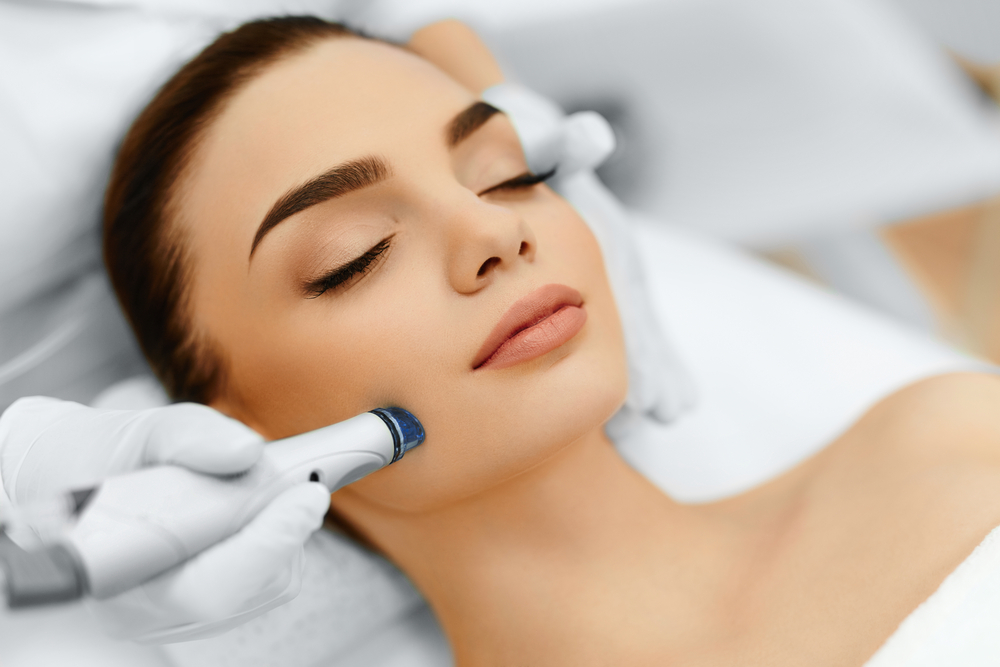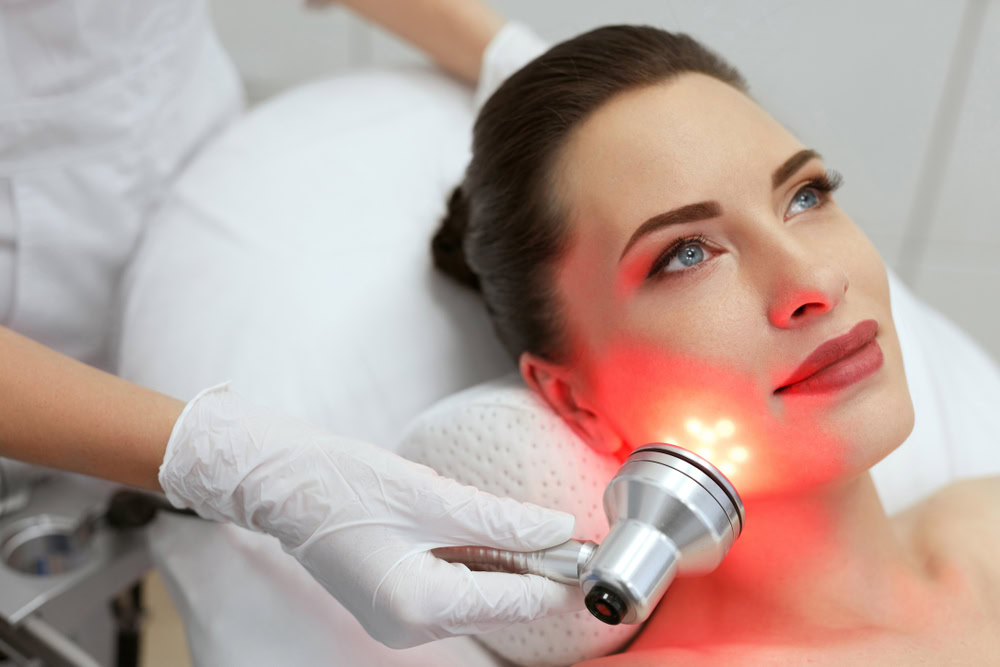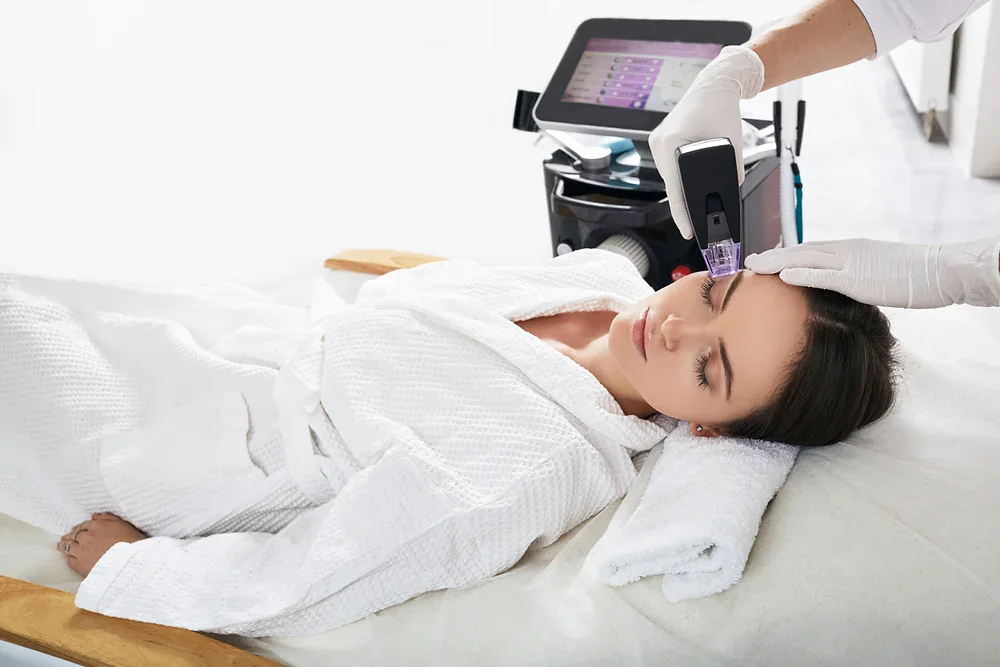Summary:
The Science Behind Chemical Peels and Skin Renewal
Chemical peels involve applying a chemical substance to the skin, intentionally causing controlled epidermal damage with or without affecting the dermis. This controlled damage prompts skin regeneration and remodeling, thereby improving overall skin appearance and texture.
Think of it as hitting your skin’s reset button. The chemical solution weakens the bonds between old and new cells so that the old cells fall off faster, leaving you with a refreshed, renewed complexion. Your skin naturally does this on its own, but the process slows significantly as you age.
Instead of just scrubbing away dead skin cells on the surface, chemical peels use specialized acids to penetrate different layers of the skin, stimulating cellular turnover and collagen production. This process accelerates skin renewal, addressing a wide range of concerns in a way that over-the-counter skincare simply can’t match.
How Different Peel Depths Target Specific Skin Issues
Not all chemical peels work the same way. The depth of penetration determines which skin concerns you can effectively address. Chemical peels are commonly classified as light, medium, and deep, depending on their depth of skin penetration. Light peels induce localized injury within the epidermis and are particularly effective for conditions such as acne and hyperpigmentation, and they also provide mild improvements in skin texture.
Light peels are your gentle introduction to chemical exfoliation. They work on the outermost layer of your skin, making them perfect if you’re dealing with dullness, mild sun damage, or want that “glow up” before a special event. These are ideal for first-time peel users, those with mild skin concerns, or anyone wanting a quick refresh. You’ll experience minimal downtime—maybe some light flaking—but you can typically return to your normal routine immediately.
Medium peels penetrate from the epidermis through the papillary dermis into the upper reticular dermis. These peels are suitable for addressing concerns such as hyperpigmentation, actinic keratoses, superficial acne scars, and shallow wrinkles. If you’re dealing with more stubborn issues like melasma, moderate sun damage, or acne scarring, this might be your sweet spot. Expect about a week of peeling and redness, but the results are worth the temporary downtime.
Deep chemical peels extend their effects into the mid-reticular dermis, rendering them valuable for addressing more profound issues such as severe acne scars and deep wrinkles. These are serious treatments requiring significant downtime but can deliver dramatic results for extensive skin damage.
The key is matching the right depth to your specific concerns. What works for your friend’s mild sun spots might not address your deeper hyperpigmentation issues. This is where professional assessment becomes crucial.
What Actually Happens During Your Chemical Peel Treatment
Understanding the process helps ease any anxiety about your first chemical peel. We thoroughly cleanse your skin with an agent that removes excess oils, while your eyes and hair are protected. A chemical solution is then applied to your skin. Most people describe the sensation as a mild tingling or warming feeling—think of it as your skin waking up.
During the procedure, we apply the solution using sponges or pads. The chemical removes the uppermost level of the epidermis. Some reddening occurs, similar to the symptoms of mild sunburn. But here’s the crucial difference: unlike a sunburn, the lower skin layers are not affected. The damage is controlled and purposeful.
The real transformation happens in the days following your treatment. Over the next few days, the skin dries up and begins to peel away. The skin eventually falls off and is replaced by a newer layer of tissue. This isn’t the dramatic, sheet-like peeling you might imagine from movies. Most people experience subtle flaking that can be easily managed with proper aftercare.
Recovery varies by peel depth. Light peels typically result in minimal to no peeling, mild redness, and a glowing complexion in 1-3 days. Medium peels involve redness and peeling for about 3-7 days, revealing fresh skin underneath. We’ll give you specific instructions for caring for your skin during this renewal process.
The golden rule during recovery? Do NOT pick at peeling skin—let it naturally shed for the best results. Your patience during this phase directly impacts your final outcome. Think of it as an investment in your skin’s future.
Why Chemical Peels Excel at Transforming Skin Texture and Tone
Chemical peels address texture and tone issues through multiple mechanisms working simultaneously. Chemical peels help to even out skin tone by removing the outer layer of dead and damaged skin cells. They can reduce the appearance of sun damage blemishes and improve the overall texture and tone of the skin.
The texture improvements you see aren’t just from removal—they’re from renewal. Chemical peels help improve the overall texture of the skin by smoothing out rough patches and reducing the appearance of fine lines and wrinkles. A chemical peel with a combination of TCA and AHAs can be effective for treating uneven skin texture.
But here’s what makes chemical peels truly effective: they don’t just remove what’s damaged—they stimulate what’s healthy underneath. Chemical peels work by using an acid solution to remove the top, damaged layers of skin, creating a wound in the skin tissue. Your body responds by working to heal the area. One way it does this is by removing old, worn-out cells and triggering a round of new collagen production.
The Collagen Connection: Why Results Keep Improving
Here’s where chemical peels really shine compared to surface-level treatments. Superficial peels exert their actions by decreasing corneocyte adhesion and increasing dermal collagen. These peels are a good method for rejuvenating the epidermis and upper dermal layers of skin.
Collagen is your skin’s structural protein—the scaffolding that keeps everything firm, smooth, and youthful-looking. As we age, collagen production naturally decreases, leading to sagging, fine lines, and that overall loss of skin “bounce.” Chemical peels boost cell turnover and stimulate collagen production. They can even lighten or erase dark spots, melasma, and sun damage while smoothing over fine lines and wrinkles.
This collagen stimulation explains why many people notice continued improvements weeks after their peel. Your skin isn’t just removing damaged cells—it’s actively building new, healthier tissue. Skin tone is improved because the new growth is smoother and more supple. The new skin cells are not affected by damage endured by the skin that is removed during and after the peeling process.
The timeline matters here. While you might see immediate glow and smoothness, the deeper benefits of collagen production continue for months. This is why we recommend a series of peels rather than just one treatment—you’re building on each session’s collagen-boosting effects.
For Wake County residents dealing with sun damage from our beautiful but intense North Carolina summers, this collagen stimulation is particularly valuable. It’s not just correcting existing damage—it’s fortifying your skin against future environmental stressors.
Targeting Your Specific Skin Concerns With Chemical Peels
Chemical peels are remarkably versatile in addressing multiple skin concerns simultaneously. Chemical peels can help reduce fine lines under your eyes or around your mouth and wrinkling caused by sun damage, aging and hereditary factors. They address sun spots, age spots, liver spots, freckles, uneven skin coloring, and rough skin, scaly patches, dull complexion.
If you’re dealing with acne or post-acne concerns, chemical peels offer a multi-pronged approach that goes beyond just surface treatment. Chemical peels can help to control oil production in the skin by removing excess oil and unclogging pores. This can help to prevent breakouts and reduce the appearance of enlarged pores. Salicylic acid and glycolic acid are commonly used in chemical peels for oily skin.
For hyperpigmentation—whether from sun damage, melasma, or post-inflammatory marks from acne—chemical peels are particularly effective. Chemical peels remove melanin and improve skin tone and texture, making them commonly used in treating hyperpigmentation conditions. The key is selecting the right type and strength for your specific pigmentation issues.
The overall radiance boost is often what surprises people most. Chemical peels help to improve the texture of the skin and give it a healthy glow. By removing the outer layer of dead and damaged skin cells, chemical peels can reveal fresh, new skin underneath, which can make the skin look brighter and more radiant.
What makes chemical peels particularly valuable is their ability to address multiple concerns simultaneously. While you’re treating your sun spots, you’re also improving texture, reducing fine lines, and boosting overall radiance. It’s comprehensive skin renewal in a single treatment.
The success of your chemical peel largely depends on proper assessment and customization. What works for someone with oily, acne-prone skin will be different from what’s needed for mature skin with sun damage. This is why working with an experienced, licensed professional is crucial—we can evaluate your specific concerns and recommend the appropriate treatment depth and frequency.
Making Chemical Peels Work for Your Wake County Lifestyle
Chemical peels are quick, non-invasive procedures with minimal downtime, offering a convenient option for those seeking cosmetic improvements without surgery. For busy Wake County professionals, this efficiency matters. You can often schedule a light peel during lunch and return to work with just a subtle glow.
The real beauty of chemical peels lies in their customizability and progressive results. The process can be repeated several weeks later, with most individuals attaining the desired look after about three or four sessions. This allows you to gradually improve your skin while maintaining your regular schedule and social commitments.
If you’ve been frustrated with products that promise transformation but deliver minimal results, chemical peels offer a science-backed solution that works with your skin’s natural renewal processes, not against them. For those ready to move beyond surface-level treatments and address skin concerns at their source, we provide the expertise and personalized approach needed for optimal results in Wake County, NC.





